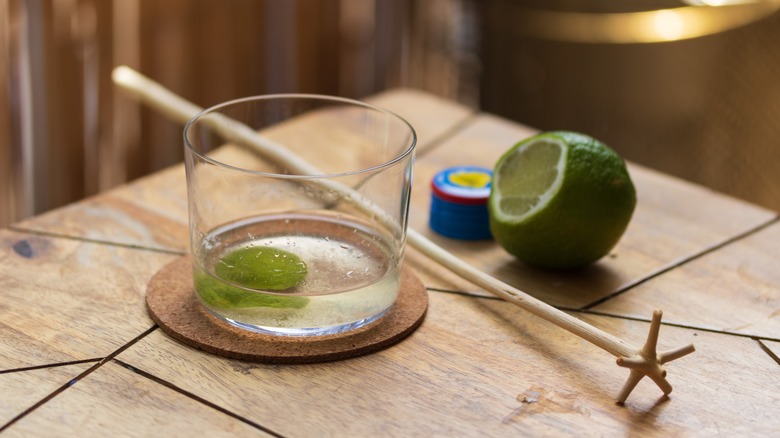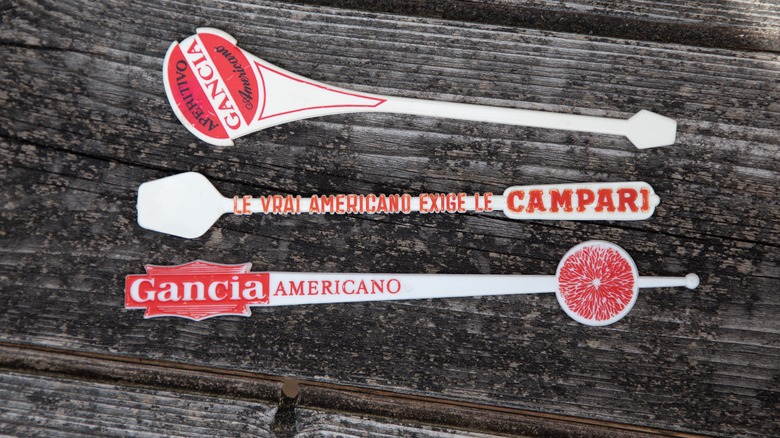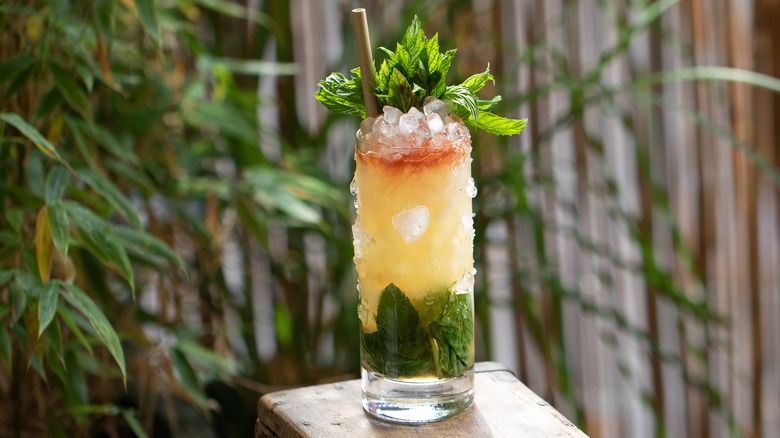What Exactly Is A Swizzle Stick (And Do You Really Need One)?
A swizzle stick as we know it today is either a functional bartending tool used to create a class of cocktails known as "swizzles" (which are typically made with rum and always with crushed or pebble ice) or a decorative element for a drink, including the aforementioned swizzles. But the origins of this little stick have roots tied to the West Indies at least as far back as the 1700s, where the original bar tool was a product of the swizzlestick tree (Quararibea turbinata), a perennial evergreen native to the Caribbean. Its branches feature short prongs jutting out from the main switch, and it was discovered that, by submerging them in liquid and swiveling them rapidly between your palms, you could create a frothy, aerated product.
Fortunately for those of us who are far from the Caribbean, there are more modern swizzle sticks (usually made from metal or plastic) that mimic this original, natural tool. Although, if you're planning to make a swizzle cocktail, it is useful to have a swizzle stick (of an iteration of one) on hand, but it's not necessary. Particularly if you're cocktailing on a budget, you can improvise your bar tools and substitute a bar spoon or even a metal skewer with a ring on the end.
Where did the swizzle stick come from?
Those original swizzle sticks eventually traveled from the British colonies back to Britain and even Buckingham Palace (where apparently Queen Victoria herself found another use for them — one opposed to the original purpose. Instead of aerating a liquid, she used it to release bubbles from her Champagne by stirring it with a swizzle stick, reputedly to prevent belching).
As the cocktail itself and the iconic tool migrated with drinkers, both became particularly popular shortly after the end of Prohibition. In 1934, a man named Jay Sindler patented a plastic version of a swizzle stick with a spiky tip as the principal product for his company, Spir-it. This little stick then evolved into a multi-purpose tool: By sharpening one end to a point, it functioned as a skewer that patrons could use to stab and retrieve olives and similar garnishes from their drinks, while the opposite end could accommodate branding for businesses who saw an opportunity with a captive audience of cocktail drinkers.
Over the years, swizzle sticks have become collectible paraphernalia, featuring everything from classic tiki imagery to fast food, restaurant, airline, hotel, and snack logos. Today, you can even have custom swizzle sticks made for weddings and other special occasions or your own business, and they even exist as eco-friendly, biodegradable versions.
When and how to use a swizzle stick (or something like it)
The contemporary resurrection of tiki culture, with drinks like the Mai Tai roaring into the modern consciousness, has brought the swizzle back in a big way. While these drinks typically resemble a sour punch, what really defines and unites them is the preparation: They are swizzled with crushed ice. From there, flavor profiles can range widely and are easy to customize. The Rum Swizzle, made with fruit juices like pineapple or orange, as well as bitters and a sweetener, actually claims the title of Bermuda's national drink. The popular Queen's Park incorporates mint and citrus, similar to a mojito.
When you're swizzling any drink, the swivel action should be executed fast and furiously, as the point is to simultaneously aerate the drink and create some dilution and a frost on the outside of the glass (which is why these cocktails are built in the glass with at least a portion of ice). Whether you use a dedicated plastic or metal swizzle or simply grab a bar spoon, skewer, or other tool to mix up your cocktail, you'll be partaking in a long history of drinks with personality.


